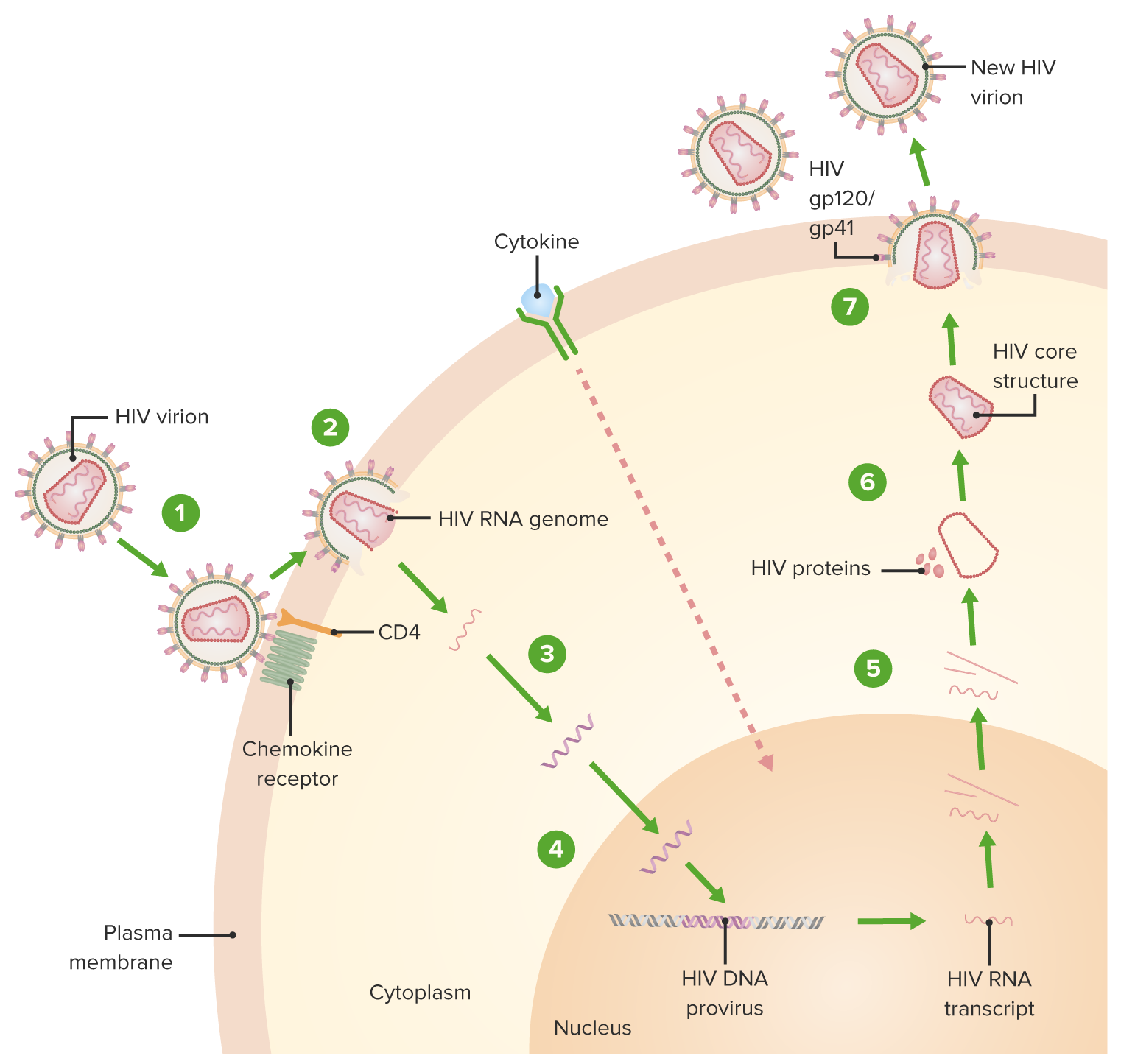Playlist
Show Playlist
Hide Playlist
Causes: Aging & Infections – Secondary Immunodeficiency Diseases
-
Slides Secondary Immunodeficiency.pdf
-
Download Lecture Overview
00:01 As we get older, things begin to go wrong, and the immune system is no exception to this. 00:05 Immunosenescence particularly affects T-cells. 00:10 The thymus shrinks by about 3% each year following puberty. 00:17 And therefore, there is a reduced production of naïve T-cells. 00:22 In infancy, the thymus produces T-cells with a mixture of different specificities. 00:28 The T-cell numbers in the peripheral pool are maintained by replication of circulating cells. 00:35 In early adult life, the thymus produces fewer T-cells. 00:42 Proliferation in the periphery maintains the size of the T-cell pool. 00:48 Replicative senescence related to the shortening of telomeres limits the number of times a cell can divide. 00:55 Cytomegalovirus-specific T-cells become dominant at the expense of other specificities during aging. 01:02 And the response to vaccines and to infection declines. 01:08 So in the elderly, nearly no new T-cells are produced by the thymus. 01:14 And this replicative senescence makes it harder for proliferation in the periphery to maintain T-cell numbers. 01:23 In addition, the T-cell pool has become very oligoclonal. 01:28 That means there are very few different clones of T-cells. 01:31 Their specificity becomes more limited as we age. 01:35 In fact as we age, neutrophils have a lower ability to produce reactive oxygen species, they have a lower ability to be chemotactically attracted to the site of the infection, and they have a reduced ability to phagocytose microorganisms. Dendritic cells have a reduced ability to co-stimulate for T-cell activation. 02:00 Macrophages again like neutrophils, have a reduced ability to produce reactive oxygen species, also to produce reactive nitrogen intermediates, the amount of IL-6 they can produce goes down, and the amount of prostaglandin E2, a pro-inflammatory substance goes up. 02:21 Natural killer cells have reduced cytokine production and a decreased ability to kill infected cells, in other words reduced cytotoxicity. 02:31 Antibody levels overall do not decline, but there is a reduced affinity of the antibodies produced, and also there are greater numbers of autoantibodies against self antigens that are produced. 02:44 Infection can be an important cause of secondary immunodeficiency. 02:54 So to just give you a few examples; Example of a parasite- malaria, a protozoan parasite. 03:01 In malaria, hemozoin which is produced from host hemoglobin upon infection with the Plasmodium species that causes malaria, this substance inhibits dendritic cell function. 03:17 An example of a virus - the measles virus. 03:20 Infection of dendritic cells leads to reduced T-cell responsiveness. 03:27 Example amongst the bacteria - Staphylococcus. 03:31 The toxic shock syndrome that you see in Staphylococcal infections is caused by a superantigen that leads to T-cell exhaustion. 03:41 A superantigen is a molecule that stimulates lots and lots and lots of different T-cell clones, not just the ones specific for the antigen, but many others as well. 03:52 And then finally of course, the Human Immunodeficiency Virus that leads to the Acquired Immune Deficiency Syndrome (AIDS).
About the Lecture
The lecture Causes: Aging & Infections – Secondary Immunodeficiency Diseases by Peter Delves, PhD is from the course Immunodeficiency and Immune Deficiency Diseases. It contains the following chapters:
- Aging
- Infection
Included Quiz Questions
Which of the following is associated with immunosenescence?
- Reduced cytotoxicity of natural killer cells
- Incline in the total number of phagocytes
- Increased antigen-presenting function of dendritic cells
- Increased antibody affinity
- Increased production of reactive oxygen species by neutrophils
Approxiamtely how fast does the thymic epithelium shrink during adulthood?
- 3% per year
- 5% every 10 years
- 25% per year
- 10% every 10 years
- Thymic epithelium does not shrink in normal adults
Infection with which of the following pathogens may cause hemozoin?
- Malaria
- Measles
- Staphylococcus
- Human immunodeficiency virus
- Cytomegalovirus
Customer reviews
5,0 of 5 stars
| 5 Stars |
|
5 |
| 4 Stars |
|
0 |
| 3 Stars |
|
0 |
| 2 Stars |
|
0 |
| 1 Star |
|
0 |






